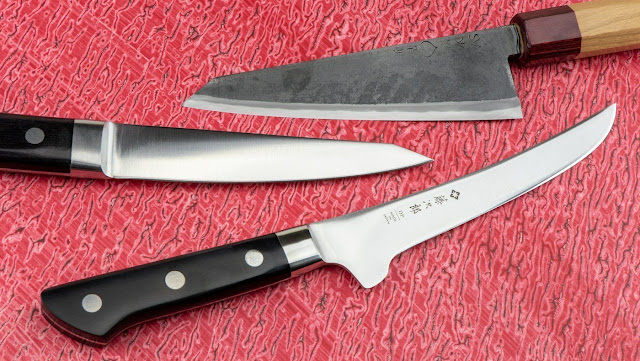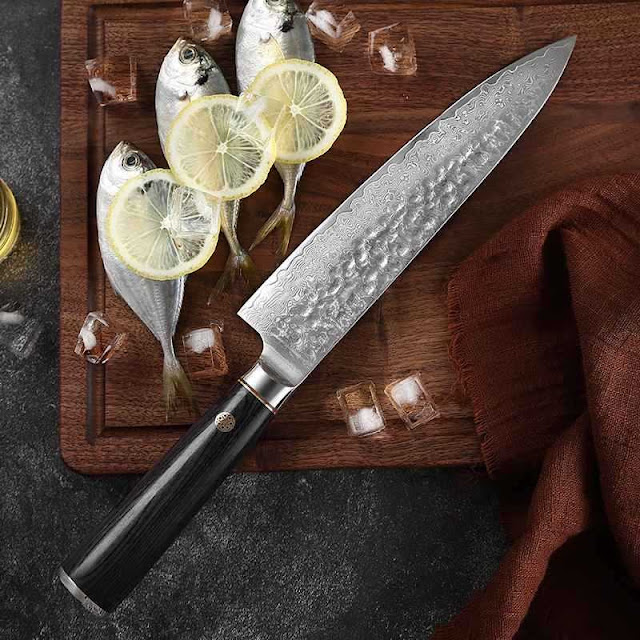The Art of Meat Preparation: A Guide to Choosing the Perfect Meat Knife
A well-chosen meat knife is an essential tool for anyone looking to enhance their meat preparation skills. Whether you're a home cook or a professional chef, having the right knife can make a significant difference in achieving precise cuts and maximizing the flavors of your meat dishes. In this comprehensive guide, we will explore the world of meat knives and provide you with the knowledge to choose the perfect one for your kitchen. From understanding different knife types to considering blade materials and maintenance, this guide will equip you with the expertise to master the art of meat preparation.
Understanding Different Meat Knife Types:
There are several types of meat knives, each designed for specific tasks. Some common ones include:
a) Chef's Knife: This versatile knife is a kitchen staple, suitable for various meat preparation tasks like slicing, dicing, and chopping. With its broad blade and sharp edge, the chef's knife is an all-around workhorse.
b) Carving Knife: A carving knife features a long, thin blade with a pointed tip, making it ideal for slicing thin, uniform cuts of roasted meat. It allows for smooth, precise carving and presentation.
c) Boning Knife: Specifically designed for deboning meat, a boning knife has a narrow, flexible blade that enables intricate maneuvering around bones and joints. It is indispensable when working with poultry, fish, or other meats that require bone removal.
d) Cleaver: A cleaver is a heavy-duty knife with a thick, rectangular blade, primarily used for splitting large cuts of meat or chopping through bones. It provides the strength and power needed for more demanding meat preparation tasks.
Choosing the Right Blade Material:
Consider the blade material as it directly affects the knife's performance and durability. Stainless steel is a popular choice for its corrosion resistance and ease of maintenance. High-carbon stainless steel blades offer excellent edge retention and are known for their durability. Choose a blade material that suits your needs and preferences.
Evaluating Blade Size and Shape:
The size and shape of the blade depend on the specific meat preparation tasks you'll be performing. For versatility, a blade length between 6 and 8 inches is recommended for most home cooks. A longer blade, such as 9 to 10 inches, is ideal for slicing larger cuts of meat. The blade shape can vary from curved to straight, with each offering advantages depending on the intended use.
Considering Handle Design and Comfort:
The handle of a meat knife plays a vital role in providing a comfortable and secure grip. Look for handles made of materials like wood, synthetic composites, or high-quality plastics. Ergonomic designs with contours and textured grips enhance comfort and control, reducing hand fatigue during prolonged use.
Maintenance and Care:
Proper maintenance and care are essential for keeping your meat knife in optimal condition. Hand wash the knife with warm, soapy water after each use, and dry it thoroughly to prevent moisture buildup. Avoid putting the knife in the dishwasher, as it can damage the blade. Regularly sharpen the blade using a honing rod or sharpening stone to maintain its sharpness. Store the knife in a knife block or protective sheath to prevent accidents and preserve the blade's edge.
Safety Precautions:
When working with meat knives, prioritize safety at all times. Use a stable cutting board to prevent slips or accidents. Always keep your fingers and hands away from the blade while cutting. When not in use, store the knife in a designated storage area, away from the reach of children or any potential hazards.
Conclusion:
Choosing the perfect meat knife is a personal journey that can greatly enhance your meat preparation skills. By understanding the different knife types, considering blade materials, evaluating handle design and comfort




Comments
Post a Comment